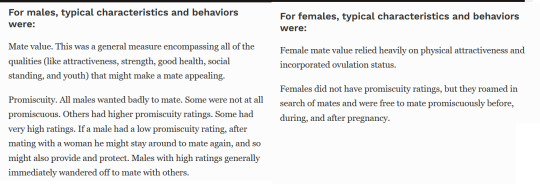#AP process efficiency
Explore tagged Tumblr posts
Text
Why Outsourcing Accounts Payable Improves Financial Control
Accuracy and efficiency are critical to a successful accounts payable process. Errors in vendor payments, duplicate invoices, and late payments can cost businesses time and money. Accounts payable outsourcing helps eliminate these issues by bringing in specialized expertise and automation.
With outsourced AP services, companies benefit from streamlined workflows and dedicated teams who ensure invoices are processed correctly and on schedule. Automation tools used in outsourcing significantly reduce human error and increase processing speed.
One of the most overlooked advantages of accounts payable outsourcing is the ability to generate real-time financial reports and analytics. These insights help companies track cash flow, monitor performance, and make informed financial decisions.
Moreover, outsourced providers ensure strict compliance with regulatory standards, minimizing the risk of audits or penalties. They also use secure systems to handle sensitive data, reducing the likelihood of fraud.
By enhancing the accuracy and speed of financial processes, AP outsourcing improves overall financial health. It allows internal teams to shift focus from data entry to strategic activities, such as budgeting and financial planning. In short, accounts payable outsourcing is an investment in operational excellence.
#AP process efficiency#error reduction in AP#automated invoice processing#outsourced AP benefits#financial process optimization
0 notes
Text
Healthy Business Operations & Relationships - Optimise AP Process With Moolamore
Is it difficult for your small and medium-sized business to maintain a healthy cash flow and run smoothly? Are late payments causing problems with your vendors, suppliers, or creditors? Accounts payable (AP) management is an important part of any business. However, it is frequently overlooked or misused in financial management.

That is why, in today's blog, we will discuss the consequences of late payments and demonstrate how the groundbreaking Moolamore cash flow tool can optimize your accounts payable process, resulting in healthy business operations and relationships.
#optimizing accounts payable process#streamlining AP operations#improving AP efficiency#AP process optimization
0 notes
Text
Automation’s Dynamic Role in Managing Accounts Payable Workflow

In the accounts payable space, success is defined by efficiency and accuracy. This transformation has been ignited by the emergence of automated Accounts Payable (AP) solutions.
Automated AP process unravels the intricacies and inefficiencies that once burdened financial operations. It ushers in an era where efficiency is no longer an aspiration but an everyday reality. The symphony begins with the capture of invoices, as businesses embrace centralized and automated methods, dancing effortlessly through data extraction and validation techniques that leave no room for errors. Yet, amidst all this, we must not forget the challenges that arise along the way.
Integration of existing accounting systems and data security may become obstacles, but in the face of innovation and adaptability, these challenges can potentially become stepping stones to success. Across industries, from Non-Profit Organizations (NPOs) to auto care, retail, and restaurants, businesses are embracing automation to streamline their AP processes and enhance their overall financial management.
In this blog I will comprehensively unveil the challenges and strategic insights that lie at the intersection of automation and payables prowess. Welcome to the future of AP workflow, where efficiency meets ingenuity.
Challenges in Complex AP Workflows
Efforts to streamline intricate AP workflows bring to light a set of well-recognized challenges, each representing a puzzle waiting to be solved. These challenges, while formidable, offer a gateway to a more efficient and effective future. As we explore these challenges, let’s delve a bit deeper into their significance:
Integration Struggles: A noteworthy 75% of organizations concede that integration of automated AP solutions with existing systems poses a substantial hurdle. The task of weaving together different technologies and platforms is akin to assembling a complex jigsaw puzzle, requiring careful consideration and coordination.
Balance Between Automation and Expertise: Striking the delicate balance between the efficiency of automation and the nuanced expertise of human insight is no simple feat. In sectors such as construction and auto care where precision is paramount, this challenge takes center stage. It’s a tightrope walk between harnessing automation’s power and maintaining the irreplaceable touch of human judgment.
Data Security as a Bedrock: For industries handling sensitive data, the challenges are twofold, adopting automation while ensuring stringent data security measures. This issue is not just about implementing new systems; it’s about fortifying digital fortresses to safeguard invaluable information against evolving threats.
Reshaping Workflows: Embracing automation requires reshaping established workflows to fit the demands of the modern business landscape. It’s like molding clay into a new form – a gradual and deliberate process that demands creativity and a keen understanding of your organization’s needs.
Harmonizing Technology and Workforce: Implementing automation isn’t just about deploying new technology; it’s about managing change and ensuring that the human workforce adapts seamlessly. The challenge lies in nurturing a culture that embraces innovation while empowering employees to thrive in the new digital environment.
For More Information visit us at https://pathquest.com/knowledge-center/blogs/automated-ap-workflow-solutions/
0 notes
Text
"Kristina Smithe was running the California International Marathon in 2019, grabbing cups of water to stay hydrated, when she started to think about how much waste such events produce. On the flight home, she did the math: 9,000 runners, 17 aid stations and something like 150,000 cups used once and thrown away.
“I was just shocked that, even in California, it’s not sustainable,” Smithe said.
That sparked her idea for something more durable — a lightweight, pliable silicone cup that could be used again and again. After working out a design, Smithe ordered her first shipment and tested them at a race in 2021.
Now her business, Hiccup Earth, has 70,000 cups that Smithe rents out to interested races to replace the typical white paper cups that can pile up like snowdrifts at busy water stops.
Billions of disposable cups are used around the world each year. These cups are often made of plastic, but even if they are made of paper, they typically have a plastic lining that makes it difficult for them to biodegrade. And making these cups, and disposing or burning them, generates planet-warming greenhouse gas emissions.
“That’s just a small subset of the amount of plastic waste that we produce, but it’s a pretty visible one,” said Sarah Gleeson, solutions research manager and plastics waste expert at climate nonprofit Project Drawdown. “It’s something that generates a lot of waste, and waste — depending on what exactly it’s made of — can really last in landfills for hundreds of years.”
As she was getting her business off the ground, Smithe emailed race directors to ask if their event used disposable cups.
“The answer was always yes,” she said. Her response: “If you’re looking for a sustainable solution, I have one.”
Now, she rents out the cups by the thousand, driving them to events in massive totes and leaving bins with the company logo for collection after use. Smithe picks up the used cups and washes them in a proprietary dishwasher.
At the PNC Women Run the Cities race in Minneapolis and St. Paul, Minnesota, in early May, Smithe helped quench the thirst of thousands of runners, dropping off 17-gallon tote bags full of her flexible blue cups.
After that race, Smithe, 35, estimated she’s taken her cups to 137 races and spared 902,000 disposable ones from the landfill. She also says her washing process needs only 30 gallons (114 liters) of water per 1,500 cups. An average efficient household dishwasher uses 3 to 5 gallons (11 to 19 liters) for far fewer dishes.
“It’s just a solution to a problem that’s long overdue,” Smithe said.
One trade-off is that the cup rentals cost race directors more than other options. Disposable cups might run just a few cents each, while 10,000 Hiccup cups would rent for about 15 cents each. That price drops if more cups are needed.
Gleeson, of Project Drawdown, sees the reusable cups as just one of many ways that innovators are looking to cut down on waste. Such solutions often have to be rooted in convenience and grounded in local or small applications to get more people to adopt them. Some cities, for instance, are experimenting with reusable food takeout containers that customers return to nearby drop-off spots later on.
While no one solution can fully tackle the problem, “The scalability is there,” Gleeson said. “I think in general, high adoption of these kinds of solutions is what is able to bring costs down and really maximize environmental benefits that you could get.”"
-via AP News, May 27, 2025
#plastic#plastic waste#running#marathon#united states#california#minnesota#north america#reuse#reduce reuse recycle#reduce#reusable#plastic pollution#waste#waste management#good news#hope
853 notes
·
View notes
Note
What's your degree in evolution say about that impregnation post?
tldr; no, it's not weird that humans don't go into heat.
ok so first off there are a lot of mammals that have concealed ovulation --- they don't physically, outwardly show when they're most fertile --- and there can be a lot of reasons for this.
but the biggest misconception that people have about evolution that I want to lay out first, is that just because something seems "more efficient" or "more advantageous" does not mean that it's going to evolve or *should have* already evolved. this is a big creationist argument too ("if evolution were real, then we would have evolved x, y, z")
if something works, it works. the fact that humans don't have obvious signs of when they're ovulating does not mean that we are a somehow "less efficient" species or that sex has a different purpose for us. rabbits also do not go into heat. they don't signal when they're ovulating. but, famously, they breed (like rabbits).
it's not good science to talk about traits and behaviors from this kind of benefit-based, anticipatory mindset. and I don't know how else to describe it, but it's like saying "oh, that fish has little legs because it needed to crawl up onto the sand." KILL THIS IN YOUR MIND! just because something ended up being good for a species and having incidental positives does not make that thing the "purpose" or driving force behind how that trait became ubiquitous across the species.
[[long aside, imagine if you will: a fish gets a mutation that makes its fins weirdly stiff. a bunch of fish get washed up on a shore, as happens, sometimes, because of the weather. and most of the fish die, but look, this fish with the weirdly stiff fins is able to leverage and worm and flop its way back into the water because its fins prop it up a little bit more than the other fish. it gets back into the water. it has more babies than the other fish (who are dead). etc. etc. etc. no purpose involved. it did not intend to grow legs.]]
"ok but why DON'T humans go into heat? if it could have happened either way, and if it's all about costs and benefits, wouldn't that be helpful, because it would mean guaranteed pregnancy?"
we're not special. many monkeys and other apes do not go into heat. again, if it works, it works, and we're doing great at getting pregnant without it.
we don't know if our human ancestors DID go into heat and if we lost that trait, OR if they never did and the trait evolved totally separate from us on other branches of the tree-- you can't necessarily determine if a trait was acquired or lost based on the number of species that exhibit it overall. you'd have to do some gene-by-gene detective work, and ovulation signalling is a complex process that's not tied to just one gene, and people are still figuring that out
you WILL see some biologists talking about how concealed ovulation "promotes monogamy" and I have to stress what an utter minefield a lot of speculative evolution is. we are TRAPPED in our current cultural context!!!
scientists who are otherwise so rational and good at thinking about things impartially will dip their toes into the evolution of sex and suddenly turn stupid. i've seen respected PhDs argue that the evolution of large breast tissue in humans is meant to "attract mates" - because western society finds breasts erotic - ignoring the fact that breasts aren't considered remotely sexual in pre-industrial societies - so of course these same guys are going to say that monogamy is some kind of end goal of an actual physical trait that humans possess.
SPOILER ALERT: there are between 6 and 13 non-monogamous primates that also conceal ovulation. oh no!! looks like monogamy isn't the point.
and then you have psychologists (who even asked??) doing studies like this

https://www.forbes.com/sites/rebeccacoffey/2021/01/29/estrus-and-the-evolution-of-mean-girl-behavior-like-slut-shaming-among-women/?sh=ca83660606b3
["estrus" is the word for behavioral changes that signal ovulation] the study is truly a wild ride but here's some highlights that show just how much people are letting their current cultural biases influence the actual design of their studies

-> all males wanted badly to mate -> females did not have promiscuity ratings -> female mate value relied heavily on physical attractiveness
it goes without saying that as long as researchers are forming their speculations on past ancestral human societies by just, looking around at their immediate culture and not questioning it at all, we're not going to get anywhere closer to understanding why the human body works the way it does
i'm losing the thread a bit because studies like this make me see red, but the point is that you're going to see a lot of insane takes from actual researchers on why human sex and biology works the way it does. you're going to see weird extrapolation and creationist-adjacent reasoning about evolution leading toward some "purpose" or people having some idea of what an ideal human body would or wouldn't do.
okay but at the end of the day, if a random human did evolve the ability to go into heat? would they be substantially more successful at producing children, and would that gene eventually become the norm for the species? no. there are so many goddamn humans in existence, and you've already got catholics having like 8 children per family anyway, so really, if there was a gene for being catholic then that would probably win out.
71 notes
·
View notes
Text
Spec Evo - Wood Apes
Sasquatch (Gigantopithecus sylvaticus)
Evolutionary Origins
Sasquatch, classified within the Ponginae subfamily, is a surviving descendant of Gigantopithecus blacki, an extinct giant primate that once thrived across Pleistocene Asia. Fossil evidence suggests G. blacki was an herbivorous, forest-dwelling ape, but climate shifts and human expansion likely forced a portion of its population to migrate, adapting over millennia to new ecosystems across North America. Unlike its arboreal relatives, Sasquatch underwent terrestrial gigantism, evolving enhanced bipedal locomotion to navigate dense forests efficiently while retaining strong upper-body musculature suited for climbing and foraging.
Physical Characteristics
Sasquatch stands between 8 to 12 feet tall and weighs over 600 lbs, with a massive, barrel-chested torso covered in thick fur ranging from deep auburn to dark brown or black—an adaptation for insulating against cold climates. Its dermal ridges, observed in footprints, indicate a digitigrade walking posture, reducing noise during movement and aiding stealth. Compared to modern apes, its cranial capacity is significantly larger, suggesting advanced problem-solving abilities and environmental awareness. The mandibles and dentition closely resemble those of Gigantopithecus, with broad molars adapted for grinding fibrous plant matter.
Its skin pigmentation is melanin-rich, allowing mild infrared absorption, a trait observed in some nocturnal mammals for heat regulation. Additionally, Sasquatch exhibits countershading camouflage, where its underside is lighter than its back, reducing visual contrast and aiding concealment in shadowed environments.
Locomotion and Dexterity
Though primarily bipedal, Sasquatch retains semi-quadrupedal flexibility, using its arms for stability when traversing uneven terrain. Its achilles tendon structure suggests explosive bursts of speed when necessary, a trait common in terrestrial primates such as baboons. The prehensile hands have long, dexterous fingers with toughened pads, enabling fine manipulation of objects. Unlike orangutans, whose hand morphology favors grasping branches, Sasquatch exhibits ground-adapted knuckle reinforcement, supporting weight distribution over long distances.
Sensory Adaptations
Sasquatches have exceptional low-light vision, akin to that of nocturnal predators, aided by a tapetum lucidum—a reflective layer behind the retina that enhances night vision. This adaptation allows it to operate efficiently during dawn and dusk, minimizing encounters with human populations.
Auditory capabilities include infrasound communication, a trait found in elephants and tigers, which enables long-distance vocalizations undetectable to human ears. Sasquatches are known to emit deep-chested vocalizations, engage in wood-knocking, and produce whistle-like calls to signal territory or coordinate movement.
Its olfactory senses are highly developed, with Jacobson's organ—an auxiliary sensory system found in some mammals—allowing it to detect pheromonal cues for identifying prey, territorial markings, or environmental changes.
Diet and Foraging Behavior
Sasquatches are opportunistic omnivores, consuming a diet of roots, tubers, fungi, berries, and occasional protein sources such as small mammals or scavenged carcasses. Its powerful jaw muscles allow it to process tough plant fibers, mirroring the dietary adaptations of Gigantopithecus blacki. Unlike obligate carnivores, Sasquatch relies on fermentation in the gut, similar to gorillas, enabling digestion of dense vegetation.
Sasquatch exhibits seasonal dietary shifts, consuming higher-caloric foods in preparation for colder months, similar to bear hibernation patterns. Additionally, they have rudimentary food storage behaviors, including stashing edible material in natural crevices or buried caches.
Social Structure and Territoriality
Unlike other great apes, which display clear troop hierarchies, Sasquatch usually exhibit solitary or small-clan behavior, maintaining vast territorial ranges to avoid competition. Evidence suggests regional vocal dialects, indicating structured communication between individuals occupying adjacent ranges.
Sasquatch exhibits environmental engineering, demonstrated by reports of constructed lean-to shelters, woven branch structures, and strategically placed rock formations for marking territory or guiding navigation. Their ability to manipulate objects implies a rudimentary understanding of tool usage, though primarily for environmental modification rather than advanced crafting.
Ecological Role
As a keystone species, Sasquatch influences forest ecosystems by dispersing seeds through its diet, contributing to vegetative regeneration. Its presence as an apex herbivore helps regulate plant overgrowth, preventing habitat imbalance. Potential interactions with wildlife include avoidance of large predators, using strategic movement to minimize conflicts with bears, mountain lions, or wolves.
Although elusive, Sasquatch sightings have occurred consistently over centuries, aligning with indigenous folklore describing forest-dwelling guardians.
Yeti (Gigantopithecus himalayensis)
Evolutionary Origins
The Yeti, (Gigantopithecus himalayensis), is a high-altitude offshoot of Gigantopithecus blacki, adapted for survival in the extreme conditions of the Himalayas. Fossil evidence indicates that G. blacki thrived in tropical environments, but climate shifts may have forced a population to migrate northward, gradually evolving traits suited for alpine ecosystems. Unlike Sasquatch, which is adapted for temperate forests, the Yeti exhibits cold-weather gigantism, a phenomenon seen in large mammals like bison and bears, where increased body mass aids thermoregulation.
Physical Characteristics
The Yeti stands between 7 to 10 feet tall, with an extremely robust frame and thick fur ranging from white to gray, providing camouflage against snow-covered landscapes. Its double-layered coat is similar to that of Tibetan blue bears, consisting of dense underfur beneath long, coarse guard hairs. Unlike orangutans, which have shorter limbs for climbing, the Yeti’s longer legs allow it optimized bipedal movement across snow. Large plantigrade feet distribute weight evenly to prevent sinking, akin to adaptations in snowshoe hares and lynxes.
Additionally, it possesses enlarged nasal passages, increasing oxygen intake at high altitudes, and hemoglobin adaptations similar to Tibetan humans, allowing for efficient blood oxygen transport in lower atmospheric pressure.
Diet and Behavior
The Yeti is a facultative omnivore, consuming lichen, roots, winter berries, and opportunistic protein sources such as carrion or small mammals. It even exhibits seasonal hibernation behaviors, reducing metabolic activity during extreme Himalayan winters. Unlike Sasquatch, which prefers dense forests, the Yeti thrives in high-altitude rocky terrain, relying on stealth and environmental awareness to avoid predators such as snow leopards.
Its territorial behavior includes vocalizations such as low-frequency growls, rumbling infrasound, and rhythmic rock-knocking, similar to known primate communication methods. Unlike fully social great apes, the Yeti exhibits semi-solitary behavior, maintaining small familial units scattered across vast territories.
Orang Pendek (Minopongo sumatranus)
Evolutionary Origins
Orang Pendek (Minopongo sumatranus), meaning “short person” in Indonesian, is a species of dwarf pongine. Unlike its gigantopithecine relatives, Orang Pendek represents a miniaturized adaptation to dense, lowland rainforests. This species evolved from early Pongo ancestors, adapting for ground-level agility and terrestrial foraging, distinguishing it from modern arboreal orangutans.
Its small stature—between 3 to 5 feet tall—reduces metabolic demands, allowing efficient survival in resource-scarce environments. Theories suggest Orang Pendek may exhibit convergent traits with extinct hominin species like Homo floresiensis, another small-bodied primate that adapted for tropical island survival.
Physical Characteristics
Orang Pendek is covered in short, coarse reddish-brown fur, closely resembling the coat of modern orangutans. Unlike its arboreal relatives, it exhibits strong, compact limb musculature, suited for rapid movement through jungle undergrowth. Its plantigrade walking posture allows for stealth and efficiency in navigating dense foliage. Additionally, its hands and feet remain highly dexterous, enabling the use of tools for foraging.
Compared to Sasquatch and Yeti, Orang Pendek has smaller, rounded molars, indicative of a fruit-heavy diet, supplemented with roots, insects, and small vertebrates. Its jaw structure suggests powerful bite force, allowing it to process hard nuts and fibrous plants.
Behavior and Ecology
Orang Pendek exhibits solitary and small-group behavior, mirroring the reclusive nature of orangutans. Unlike the Yeti or Sasquatch, which thrive in colder regions, Orang Pendek is strictly tropical, relying on dense rainforest cover for concealment. It exhibits intelligent foraging strategies, such as using rocks or sticks to extract insects, resembling rudimentary tool use seen in wild orangutans.
Its cryptic nature and alleged ability to mimic forest sounds may serve as defense mechanisms against predators such as clouded leopards and sun bears. While some legends describe Orang Pendek as a near-human entity, its placement in Ponginae suggests it is a specialized primate rather than a hominin-relative.
Yeren (Gigantopithecus sinensis)
Evolutionary Origins
The Yeren (Gigantopithecus sinensis), or "Wild Man" of China, is an offshoot of G. blacki that survived in the dense subtropical forests of central and southern China. Unlike Sasquatch and Yeti, the Yeren exhibits arboreal adaptations, suggesting it retained some tree-climbing capabilities while incorporating more terrestrial behaviors over time. It likely diverged from Gigantopithecus populations that migrated eastward, evolving traits suited for warmer, humid environments.
Physical Characteristics
The Yeren stands between 6 to 9 feet tall, with reddish or dark brown fur, reflecting similarities to modern orangutans (Pongo spp.). Unlike fully terrestrial primates, Yeren retains curved fingers and powerful gripping strength, allowing it to navigate canopies or scale rock faces when necessary. Its limb proportions suggest semi-bipedal locomotion, switching between upright walking and quadrupedal movement depending on terrain.
Its facial structure exhibits pronounced brow ridges, deep-set eyes, and a sloping forehead, similar to fossil evidence of Gigantopithecus. Unlike Sasquatch, which thrives in temperate forests, Yeren's lighter skeletal frame allows for greater agility in thick jungle environments.
Diet and Behavior
Yeren is a frugivorous omnivore, consuming fruit, nuts, small vertebrates, and honey. Reports suggest tool-using behaviors, such as using rocks to crack nuts or sticks to extract insects, indicating primitive problem-solving abilities. Unlike Sasquatch, which may exhibit nocturnal habits, Yeren is diurnal, maintaining activity during daylight hours while avoiding dense human settlements.
Yeren is territorial yet passive, avoiding direct confrontation and relying on stealth and strategic retreat patterns. Vocalizations include low growls, hoots, and wood-knocking, similar to observed orangutan behavior.
Almas (Australopongo caucasicus)
Evolutionary Origins
The Almas (Australopongo caucasicus), reported in Central Asia and the Caucasus region, is a cold-adapted pongine that evolved in high-altitude, temperate regions. Compared to its relatives, Almas exhibits shorter fur, reduced body size, and enhanced endurance suited for mountainous terrain. Its lineage may trace back to ancient hominid-like pongines that migrated westward from Southeast Asia, adapting to a mixed-woodland and grassland ecosystem.
Physical Characteristics
Almas is shorter than Yeti or Sasquatch, standing between 5 to 7 feet tall, with stocky, muscular proportions optimized for climbing and navigating steep environments. Unlike the taller Gigantopithecus descendants, Almas has broad feet and shorter limbs, indicating enhanced power and stability over agility.
Its facial structure is closer to orangutans, retaining a sloping forehead and large jaw structure, but exhibiting forward-set eyes, implying enhanced depth perception for tracking movement in open terrain. Fur coloration ranges from grayish-brown to tawny, blending with rocky landscapes.
Diet and Behavior
Almas is a foraging omnivore, subsisting on roots, fungi, tubers, insects, and occasional protein sources. Unlike the tree-dependent Yeren, Almas exhibit burrowing behaviors, utilizing caves or rock crevices for shelter. The wide territorial range of Almas suggests a nomadic lifestyle, migrating seasonally in response to food availability.
Reports suggest rudimentary communication, including soft vocalizations, rock placements, and gestural behaviors, potentially resembling early hominid communication styles.
Yowie (Gigantopithecus australis)
Evolutionary Origins
The Yowie (Gigantopithecus australis), associated with Australia, represents a unique pongine adaptation to arid environments. Unlike its forest-dwelling relatives, the Yowie evolved traits suited for survival in savanna, scrubland, and eucalyptus forests, adapting kangaroo-like movement efficiency to cover large distances.
Fossil evidence suggests that Gigantopithecus never reached Australia, but land bridge migration during prehistoric climate shifts could have introduced proto-pongine species, which then adapted to Australia’s harsh and unpredictable climate.
Physical Characteristics
The Yowie stands between 6 to 10 feet tall, with dark brown or black fur, similar to marsupial megafauna such as wombats or koalas. Compared to Sasquatch, Yowie exhibits leaner muscle structure, longer limbs, and reduced bulk, allowing it to move more efficiently across open terrain.
Unlike other pongines, the Yowie’s foot structure resembles kangaroo-like digitigrade adaptation, allowing for long-distance travel and rapid acceleration. Additionally, its facial morphology exhibits elongated jaw structures, enabling efficient water conservation and adaptation to drought conditions.
Diet and Behavior
The Yowie is a dry-climate omnivore, consuming roots, eucalyptus leaves, insects, and carrion. Unlike Sasquatch, which maintains cold-weather adaptations, Yowie developed heat-regulating physiological features, including sparse fur density and sweat gland adaptations similar to desert-adapted mammals.
Reports suggest intelligent problem-solving, with terrain memory, trail-marking behaviors, and complex evasive tactics when encountering threats. Unlike territorial Sasquatch, Yowie exhibits wide-range nomadism, constantly shifting its habitat in response to seasonal changes.
#art#drawing#illustration#sketch#artwork#artist#creature#creature art#creature drawing#writing#writers on tumblr#creative writing#spec bio#spec evo#speculative biology#speculative zoology#speculative evolution#wood ape#cryptids#cryptid#bigfoot#sasquatch#cryptozoology#cryptozoologicon#yeti#yeren#orang pendek#almas#yowie#gigantopithecus
8 notes
·
View notes
Text
Okay, following up on that news I saw earlier. I first was alerted to it by the BBC Global News Podcast and Al Jazeera News Updates. For easier reference and more detail, however, I will be referring to this article from AP News for details, which itself references this article that cites the Washington Post.
Things of note:
This seems to have been caused by the recent incident where over 115 Palestinians were killed, and over 750 injured, by the IDF during a reported stampede by starving civilians trying to get to aid trucks.
The air drops will begin "in the coming days," and will start with MREs (military rations).
There will be multiple rounds, according to John Kirby.
The process will be done in conjunction with Jordan, which shares the longest of Israel's borders, the Eastern. (That part isn't in the article but I don't know how many people actually know where Jordan is.)
The US admits that it doesn't... know what it's doing? And is basically going to learn on the job. Not super promising but better than nothing. Most of the concern seems to be that the extreme crowding will increase the risk of injury; I assume dropping large pallets of supplies is easier when there's a lot of empty space, and smaller, less dangerous packages mean dropping less at a time since more space is needed in the planes for the parachutes.
Planes airdropping supplies is in itself MUCH LESS efficient than truck deliveries for this reason.
They're also hoping to set up a "maritime corridor" but there's no real word on how that's going to be achieved other than the ceasefire talks.
The U.S. has been pushing Israel to speed the flow of humanitarian assistance into Gaza and to open a third crossing into the territory, but Friday’s violence showed the challenges no matter the circumstances. “The loss of life is heartbreaking,” Biden said Friday as he announced his decision to order airdrops. “People are so desperate.”
Additionally, the second article has more details on the concerns that kept airdrops from being implemented earlier:
“Aid flowing to Gaza is nowhere nearly enough,” Biden said. “Now, it’s nowhere nearly enough. Innocent lives are on the line and children’s lives are on the line. We won’t stand by until we get more aid in there. We should be getting hundreds of trucks in, not just several.” The White House, State Department and Pentagon had been weighing the merits of U.S. military airdrops of assistance for several months, but had held off due to concerns that the method is inefficient, has no way of ensuring the aid gets to civilians in need and cannot make up for overland aid deliveries. [...] “It’s not the kind of thing you want to do in a heartbeat. you want to think it through carefully,” Kirby said. He added, “There’s few military operations that are more complicated than humanitarian assistance airdrops”
The second article also discusses how domestic conflicts, namely Speaker Johnson's refusal to address foreign crises until "taking care of America's needs" (paraphrase), have been delaying much of what could have been done before now.
#united states#gaza#israel#palestine#jordan#middle east#Joe Biden#John Kirby#death mention#aid#food aid#phoenix politics#current events
60 notes
·
View notes
Text
We'll have more on the Australian election in the next couple of days. While it's clear that the Labor Party has won a solid majority in the Australian House of Representatives, I'd like to wait until all 150 seats have likely winners before throwing numbers around.
But we already do know that Donald Trump has had a negative impact on right of center parties in national elections twice in less than a week. Both the Conservative Party in Canada and The Coalition in Australia went from election favorites to losers in less than six months because of Trump. And the leaders of both parties even lost their own seats in parliament. SAD!
Incumbent Prime Minister Anthony Albanese secured a come-from-behind win for his center-left Labor Party in Australia’s election Saturday while his right-wing challenger lost his seat. The Labor landslide came after Albanese’s government spent months trailing the opposition in polling, but gained support rapidly in the wake of U.S. President Donald Trump’s clash with Ukrainian leader Volodymyr Zelenskyy and his “Liberation Day” tariffs.
Being the local equivalent of Trump will repel more votes than it attracts.
Over his three years as opposition leader, Peter Dutton, the hard-right prime ministerial candidate of the conservative Liberal Party of Australia, embraced MAGA-style politics and bigged up Trump. In February, for instance, Dutton called Trump a “big thinker” and lauded his “art of the deal” negotiation tactics after the American president called for the U.S. to take over Gaza and turn it into a Middle East Riviera. Dutton’s campaign borrowed heavily from the U.S. Republican Party’s policies under Trump, with the Liberal leader arguing for significant cuts to the public service and championing a DOGE-inspired government efficiency unit. Dutton also unveiled (and then abandoned) a policy to force all public servants in the Australian capital Canberra back into the office full-time. Dutton’s embrace of MAGA policies backfired spectacularly.
Australians can see that Trump is trying to turn the US into a shit hole country. They want no part of that for Australia.
While the now defeated Peter Dutton was fighting MAGA-style culture wars, Aussies were more focused on economic issues.
Taking inspiration from Trump, Dutton said that Indigenous “welcome to country” ceremonies, which are performed by Aboriginal or Torres Strait Islander elders to welcome visitors to their ancestral lands, are “overdone,” and claimed “we need to stop the teaching of some of the curriculum that says that our children should be ashamed of being Australian.” In a nod to Trump’s attacks on the media, Dutton labeled Australia’s national broadcaster, the ABC, and the left-leaning Guardian newspaper “the hate media,” after they reported in the last week of the campaign that he was on track to lose the election.
The Guardian found it difficult to consider its glee in headlines about Dutton's defeat.
Then there's something which Republicans in the US are in the process of learning the hard way. When you try to appeal to the hard right, you lose moderate voters.
Amid rising support in the polls for far-right parties including the Trumpet of Patriots and Pauline Hanson’s One Nation, Dutton sought to undercut their appeal by taking on some of their policies and aping their language. But by attempting to woo these voters, Dutton alienated centrists, with his polling tanking among younger voters and women.
It doesn't seem likely that Trump will acknowledge that his bad influence had anything to do with The Coalition loss in Australia. He's more likely to blame their electoral disaster on DEI or something irrelevant. But nervous Republicans may be looking at Australia and wondering if they are seeing their own future.
#australia#australian election#peter dutton#defeat of the coalition#anthony albanese#labor party landslide#donald trump#maga#trump's impact on conservative parties abroad#electoral disaster#republicans
8 notes
·
View notes
Text
As the Trump administration’s aggressive immigration policy ramps up, people have started to seriously consider their privacy and security when crossing into the United States. That’s especially true when it comes to searches of travelers’ phones and other devices, which US Customs and Border Protection agents have broad authority to search. Fortunately, there are some steps you can take, such as deleting certain apps from your personal phone or using an alternative phone that’s set up just for traveling internationally.
Operatives with Elon Musk’s so-called Department of Government Efficiency (DOGE) have spent the first months of the Trump administration clawing their way into US government systems. It’s now starting to become clear exactly what those systems are and what kind of data on US residents they hold. WIRED this week detailed the 19 systems DOGE operatives have access to just at the Department of Health and Human Services.
Pope Francis died on Monday at age 88. The passing of the supreme pontiff sets in motion a conclave, the secretive process used to select the new pope. To protect the conclave’s integrity and try to prevent leaks, a wide range of security measures will be put in place, from privacy film on windows at the Vatican to signal jammers and sweeps for hidden microphones.
Google recently announced the initial rollout of end-to-end encrypted email for Google Workspace accounts, which is good news for the privacy of enterprise-level users. When a Workspace user emails a non-Workspace account, the recipient gets an invitation to create a guest account so they can read the email. Unfortunately, security experts say, this will likely create new opportunities for phishing attacks, as scammers try to bait people with fake invitations.
But that’s not all. Each week, we round up the security and privacy news we didn’t cover in depth ourselves. Click the headlines to read the full stories. And stay safe out there.
SignalGate is the scandal that just won’t die—at least not if you’re US secretary of defense Pete Hegseth. On Wednesday, The Washington Post reported that Hegseth had installed Signal on a “second computer in his office” so that he could “use Signal in a classified space, where his cellphone and other personal electronics are not permitted, and communicate with ease with anyone.”
The Associated Press on Thursday added to the picture of Hegseth’s reported Signal use, revealing that Hegseth got a second internet line installed that connected directly to the public internet rather than through the Pentagon’s secured connection, according to sources who spoke with the AP. Hegseth allegedly did this so he could use that second computer with Signal installed. Then on Friday, The New York Times found that the phone number associated with Hegseth’s Signal account—the one he used in that infamous group chat—is easily discoverable online, potentially opening him up to targeted cyberattacks by hostile nations.
Cybercriminals Stole a Record-Breaking $16.6 Billion From US Entities in 2024
Despite a steady flow of arrests and takedowns of online scammers, cybercriminals are operating at unprecedented levels and making more money than ever. Two reports released this week reveal the stark scale of online criminality. Last year in the United States, businesses and individuals lost $16.6 billion to online crimes, according to the FBI’s Internet Crime Complaint Center—that’s the highest figure ever reported and a leap of 33 percent compared to 2023. In 2024, there were 859,532 complaints about potential online crimes, with the FBI saying phishing and spoofing complaints account for 193,000 of them, followed by extortion with 86,000 complaints. Investment scams, which often involve cryptocurrency, made up more than $6 billion of the total losses, with business email compromise scams leading to losses of $2.7 billion.
Around the same time, the United Nations Office on Drugs and Crime highlighted that giant scam compounds in Southeast Asia—where human trafficking victims are forced to work scamming people—are generating $40 billion in profits per year and keep on growing. These industrial-scale scam organizations, which are often linked to Chinese criminals, heavily use investment scams (sometimes called pig-butchering) to con people out of their life savings and are expanding outside of the region. “It spreads like a cancer,” Benedikt Hofmann of the UNODC said in a statement.
Google Chrome Won’t Ditch Creepy Tracking Cookies After All
Back in 2020, Google announced its Chrome browser would stop using third-party cookies, which track people around the web, and would move to a less creepy way of powering its advertising businesses. Web browsers such as Safari, Firefox, and Brave ditched cookies years before Google made the announcement. But this week, after countless U-turns, failed efforts to develop alternatives, and criticism that proposals to replace cookies would favor Google, the company announced it will, in fact, keep the trackers in Chrome.
“We’ve made the decision to maintain our current approach to offering users third-party cookie choice in Chrome,” wrote Anthony Chavez, the Google VP in charge of its Privacy Sandbox efforts, in a blog post. “As we’ve engaged with the ecosystem, including publishers, developers, regulators, and the ads industry, it remains clear that there are divergent perspectives on making changes that could impact the availability of third-party cookies,” Chavez wrote. While the US government is proposing that Google sell off Chrome as part of its antitrust case against the company, it’s still possible to turn off third-party cookies or use a privacy-friendly
5 notes
·
View notes
Note
Hmmm, well, unfortunately I'm not an expert on reversing the twisting process, and sadly I don't know any experts on the topic either. I can however offer you this.
*the anon offers a strange contraption, it looks like a custom built internal cooler, running off water rather than ichor, though the design is rather odd, alien even.*
This should help you be able to harvest coolant in a less destructive manner, seeing as you're currently running on a version of vampirism with your current coolers. My own model uses a scaled up version, so I can attest to the efficiency of this device, and its installation should be relatively easy, just slot it in beside your existing coolers. Don't think about it as an upgrade, merely an add-on. Also, *summons a large water cooler* this should give you a large supply of coolant for it.
Also, please don't say you deserve this, I don't think anyone does from the sounds of it. You're in a horrible situation, and unfortunately with no end in sight, but you don't need to accept it as all you deserve. You deserve to feel safe, loved and happy. No sentient life should suffer like this, including you.
-Light anon
W H- @̷T̴ IS THIS ? IT-S F ILL ED <error>- WATER- <errorRRRRRRR> YU' LL K11 - LL L LMEE EEE EEE EEE---
AP-o-000logies. Its a s̸t̵r̶8̵g̴g̴l̴3̵ ̸ 2oo h0ld backkk̸̢̧̧̯̞̤͓̻̳̺͎̑͊͊͒́͌͒͝ͅk̵̳̏̃͂́̉̊͜k̸̙͙͍̮̇̈́̓̃̈́̄́͐̔͘̕ḱ̸̨̰̜̼̥͙̘̹̹̥̬̙̞̟̺̞ͅ.̶̢̠͎̽̇̆̿̊̌̂̑̾̆̾̎̚͠͝G3T IT A@ AWY %^^ b-- utu ut 1'll try... 1I1I Th!nk it h_lps 1 C4N't h_rt an0ns. I just d̶o̵n̸t̴ ̴t̵h̵1̴n̸k̸ i d3serve help c0nsidering I attack every1 n0w. St1l, l3t me tr y to attach t̷h̵a̷t̴ ̷n̶e̵w̸ ̸c̸o̸o̷l̴e̶r̴...
<"Vee" tries to slot the new cooling system inside of her, reaching between her opened stomach area. She lets out buzzes and sparks as she tries her hardest not to accidentally pop it open and spill water down her body. It's extremely difficult as she keeps flinching every time she tries to fit it in.>
<kzzz> <WARNING! FO-00EREIGN 0BJECT DE3TECTED. $SEEK IM1EDIATE HELP! W4-4NNING-> I1D- DON't think 1̵t̸'̴l̵l̵ ̵f̷i̶t̷ By myself. 1'm n0t -t susre if I ca44nn keep3 h-0lding 0n forrrr-r-r---- <E̴R̵R̵O̵R̵> <E̴R̵R̵O̵R̵>
<"Vee" suddenly snaps and throws the new cooler away, fuzzy static coming from her as she violently twitches.>
A-R-R-E Y0U TRYING TO K̷I̴L̴L̶ ̵ME?! I- I'M N0T LE3TTING W̵@̶E̵R̶ ̴I̷N̴ ̷M̴Y̷ ̸B̸0̵D̸D̷Y̵! 1M O-ONLY D3SIGNED F0R ICHOR INT@KE!
5 notes
·
View notes
Text
Accounts Payable: Is Outsourcing a Better Option Than In-House Teams?
For many businesses, deciding between accounts payable outsourcing and in-house processing is a key financial decision. Both methods have their pros and cons, but when it comes to efficiency, cost, and scalability, outsourcing often takes the lead.
Let’s start with the AP process comparison. In-house processing requires a dedicated team, regular training, and constant oversight. It can be effective for small volumes, but as businesses grow, the process often becomes inefficient. On the other hand, accounts payable outsourcing provides access to experts and advanced systems that streamline operations and reduce the need for internal oversight.
One major advantage of outsourcing is cost efficiency. Maintaining an in-house AP department involves fixed expenses such as salaries, software licenses, and hardware. In contrast, outsourcing offers flexible pricing based on usage, which can lead to significant savings—especially for growing businesses.
The outsourcing benefits also include reduced risk of late payments, improved compliance, and faster invoice processing. Service providers often have robust systems in place for tracking, verifying, and paying invoices, leading to better accuracy and fewer vendor issues.
Speaking of vendor management, outsourcing partners are equipped to handle communications and disputes efficiently. They ensure vendors are paid on time, which helps maintain strong supplier relationships and may open the door to early-payment discounts.
Ultimately, for companies seeking scalability, improved performance, and long-term savings, accounts payable outsourcing is a clear winner. While in-house teams may work for some, outsourcing offers professional-grade solutions that adapt to your needs and free up resources for core business activities.
#accounts payable outsourcing#AP process comparison#cost efficiency#outsourcing benefits#vendor management
0 notes
Text
It's so strange how the problems that come with existing online have forced me to find words to explain concepts that I assumed were mostly universal. I thought knowledge, talent, expertise, hard work and persistence were skills that were valuable and should be encouraged in everyone. A.I. has taught me otherwise.
A.I. might as well stand for Anti-Intellectualism, because that's the spirit behind the excitement. It literally takes the skill and labor out of skilled labor. Learning is being treated like an inconvenience, a problem to be eliminated in the name of efficiency. Entire disciplines are being treated as grand sacrifices in the name of mass production and instant gratification.
Why does art need to be efficient? It's not food. It's not medicine. It's not shelter. How fast are people shoveling content into their gob that between social media, streaming, and physical media, it's still not enough? Technology has already pushed creators to pumping out content at an unhealthy and unnatural rate just to try to appease social media algorithms. Now that same output is being used to train new algorithms to pump it out even faster while cutting creators out entirely. It’s sick and cruel. And instead of this exploitation being treated like an injustice that needs to be corrected, I'm told "It's inevitable. Adapt or die. Don't put your work online if you don't want it taken", delivered either with condescending pity, callous apathy, or malicious glee.
If A.I. fans aren't taking the "hardened pragmatic realist" approach, then they are shallowly aping socialist ideas, blaming capitalism for exploitation, not the tech. A very "guns don't kill people, people kill people" take. Just because exploitation of creatives is not a new concept doesn't mean A.I. isn't responsible for making it INFINITELY WORSE. They’ve also decided that people shouldn't be pursuing art and knowledge for the sake of profit and that the skilled creators trying to protect their labor are greedy, elitist gatekeepers trying to keep art from "the common man" (because creatives aren't the common man, apparently). It's that same resentment and distrust of experts that's typical of anti-intellectualism, except creative fields are in this weird place where they aren't even respected the way STEM is, so there's an extra layer of belittling and disrespect to the othering. Consumers feel entitled to art, but they don't understand how it's made, and they definitely don't respect it as a discipline.
The glut of creative content available for "the common man" to consume has never been greater or more accessible, but it's still not enough. It's not enough to just consume art. They want ownership. They want the sense of accomplishment that comes from making something, without having actually *made* it. And despite their finger-wagging at creatives wanting to protect their careers, they also want to make some money. Etsy is flooded with A.I. prints, kindle is filled with A.I. books, spotify is loaded with A.I. songs. There’s even A.I. kickstarters. Along with replacing writers and animators, CEOs want to replace actors, voice actors, and models with simulacrums they can make do whatever they want, forever, and A.I. fans are hoping they'll be the ones hired to facilitate that process. Even without actively profiting, A.I. still devalues the work of skilled laborers. Why commission a skilled artist when for 15 dollars you can buy a machine that will give you infinite works of the same or better quality, instantly? Do you have faith in consumers to prioritize ethics over convenience? Do you think it's right and fair and good to make compensating skilled creators an act of charity rather than a necessity?
A.I. users overestimate their contribution to the final product, thinking their idea is so unique and their vision so strong, that of course they should claim ownership… conveniently ignoring all the infinite little decisions A.I. made for them based off the knowledge and fine motor skills of millions of artists. It's like they think fully realized Good Ideas are a natural resource waiting to be excavated, and traditional creators had the unfair advantage of pickaxes, physical strength and a knowledge of geology to find the rich veins. Now A.I. is providing scanners and and powerful machinery so "the common man" doesn't need strength or knowledge to quickly mine those same veins first.
But that's not what art is, and that's not how creation works. Art is communication. Imagination is fostered through life experience, observation and processing information with your human brain. It's something every living person could do, because every person is unique with unique life experiences. Creation is practice, study, experimentation, problem solving, and adapting to limitations. There is nothing stopping anyone from doing these things. Natural ability has been grossly overvalued: most people with "talent" were not making hyper-realistic paintings at 13 like Picasso. What happens is a child shows a slight aptitude, the adults in their life notice and give them positive reinforcement, and then they are motivated and encouraged to pursue that interest. So instead of treating the naturally talented as having an unfair advantage, why not blame the adults in your life for not encouraging your interests at a young age. Or if you want to be brutally honest, blame yourself for not pursuing your interests despite a lack of external validation. You have agency.
I try to imagine, what is an A.I. fan's idea of a perfect future? One where no one has any advantages that another person doesn't, where "everyone's special so no ones special"? Where all labor is automated and no one has to do anything they don't want to and everyone spends their infinite free time bettering themselves for it's own sake rather than for money? Every time they mention the evils of capitalism and how we need universal basic income and other ideas of a post-work society it makes me want to pull my hair out. We don't *have* those things. We aren't even close to those things. So it is functionally useless to factor that into your argument. Who is Tech to use A.I.'s elimination of thousands of jobs in non-Tech industries as a bargaining chip to try and incentivize the government to create safety nets for those displaced? Since when has your government prioritized it's citizens over corporations? Have proponents always been this naive, or only when trying to assuage concerns over the consequences of their new toy?
Even if we did achieve that techie utopia, what makes them think most people will use their free time productively, exercising their brain for it's own sake? Because speaking for myself, I can have every good intention of using my time to create and learn, but those things frequently lose out to short term, dopamine-driven feedback loops like social media and video games. Without any external incentives, I guarantee far less people will pursue learning for its own sake if the knowledge-based roles that keep society functioning are filled by machines. Think of how we've had to reintroduce exercise into are lives just for exercise's sake. Hows that going? Again, speaking for myself as an overweight person: Not Great. I might intellectually know physical fitness is important, but the difficulty and unenjoyable nature of exercise and the benefits not being immediate and obvious means it frequently loses out to activities I do enjoy. I know not everyone is like me, but many, many people are. Now replace physical fitness with cognitive abilities. Abilities that require work, who's benefits are totally abstract, and would be wholly unnecessary for living in an A.I dependent society. If that doesn't give you chills up your spine, then you must stand to benefit from a culture of stupidity that's hopelessly dependent on tech. And I hate you.
No ones going to read all this.
#AI#Tech#Art#Artists#creation#anti intellectualism#knowledge#labor#exploitation#Long#word dump#future
56 notes
·
View notes
Text
Morgan Stephens at Daily Kos:
Nearly two dozen federal technology workers just walked out the door rather than bow to billionaire Elon Musk, who they say is set on running the government into the ground with chaos and cronyism. On Tuesday, 21 engineers, data scientists, and product managers who worked for what was once known as the United States Digital Service submitted a mass resignation letter in response to Musk’s Department of Government Efficiency interloping in federal jobs and agencies. In the joint letter, obtained by the Associated Press, staffers from the USDS wrote, “We will not use our skills as technologists to compromise core government systems, jeopardize Americans’ sensitive data, or dismantle critical public services. We will not lend our expertise to carry out or legitimize DOGE’s actions.” They also alluded to nameless DOGE bros wearing White House visitor badges infiltrating their office and grilling the nonpartisan staffers. The staffers told reporters these young men were rife with technological inefficiency, fandom for Musk, and ideological partisanship.
“Several of these interviewers refused to identify themselves, asked questions about political loyalty, attempted to pit colleagues against each other, and demonstrated limited technical ability,” the staffers wrote. “This process created significant security risks.” This follows the layoffs of 40 USDS staffers earlier in February. After Musk's initial layoffs, 65 USDS employees remained—a third of whom just resigned. USDS was established by former President Barack Obama in 2014, after his chaotic rollout of the federal health care website, Healthcare.gov, proved to be clunky and slow. Since then, the agency has made the site efficient, helping Americans sign up for health care. It has also worked to improve services for veterans, assisted the government in purchasing updated technology, and created a free tax portal.
Nearly two dozen United States Digital Service workers said no to bowing to Elon Musk, as they resigned rather than enable his disastrous DOGE agenda.
See Also:
AP, via HuffPost: DOGE Staffers Resign After Being Asked To Dismantle ‘Critical Public Services’
3 notes
·
View notes
Text
STORY BEAT; Introductions.

There are a disturbing amount of attractive people in this room.
Rubbing the temples above his thin-framed glasses, Steve Wilson was trying his hardest to clear the fog that had been lingering in his head since the morning. It was moments like these that made him wonder why he bothered giving up drugs back in ‘95. Judging by his current state of consciousness (ape, roughly), the Foundation clearly had no issue dosing its employees with whatever anomalous version of chloroform they had cooked up in the amnestics lab.
It’s probably something ridiculous, like interstellar weed.
Adjusting his posture in his seat, Steve tried his best to gauge if anyone else in the room was still recovering from an unconventional commute. It could make for good small talk, which would yield a tactical advantage in these early stages. A quick re-scan of the room confirmed that the Foundation had put together a group of people who could all be the main character in a different multimillion dollar Hollywood production. This included the two people he recognized, one of which he was actively pretending not to.
I’ve been a model employee for the past three years. They couldn’t possibly know.
Steve quickly compartmentalized this catastrophic train of thought and returned to his analysis. Much more than their looks, the people in this room all brought with them some indispensable skill. Emerging from the brain-fog, the machinery in Steve’s mind started to fully process the raw potential energy emanating within site-φ. A chance for him to make the right connections. To attain the right information. A chance to get everything back.
Small talk will have to wait. Introductions are starting.
Steve waited patiently as five of his new coworkers introduced themselves. His mind was now operating at maximum efficiency, carefully judging the performances and reactions that it could glean. After the fifth introduction, Steve felt he had a solid grasp of the group dynamic, and any more waiting would make him appear shy. Shy would not benefit him in this dynamic. He pushed up the corners of his mouth and gave a slight raise of his hand. Clearing his throat, he tuned his low, gravelly voice to a warm hum. “Greetings, I’m Stephen Wilson. Call me Steve.” He had been practicing this tone for years.
“I was born and raised in Maine, but I’ve been doing Research at Site-120 for the past 10 years. If you want to know the best Polish chain restaurants, I am the authority.” He caught at least two smiles and one look of genuine interest. “I have my PhD in Biological and Biomedical Sciences from Harvard, and my work in the Foundation has mostly been within the thaumaturgical field. I’m looking forward to working with all of you. Please don’t be afraid to seek me out for any of your reality-warping needs.” Steve leaned back in his chair, giving a friendly nod at anyone still making eye contact. Back in high school and university, introductions used to terrify him. 50 years on this Earth, however, taught him that anything — even social anxiety and a room full of hot people — could be conquered.
13 notes
·
View notes
Text
Space Station Concepts: Power Tower

"It would provide maximized user viewing opportunities, a clear area for Shuttle dockings and versatility in Station growth. The design was also less sensitive to changes in mass caused by the addition of modules to the Station. The 'Power Tower' station's main structure was to be 122 meters tall with 75 kW solar panels sticking 41 meters to either side of the centerline.

"This is an artist's conception of the proposed 'Power Tower' space station configuration, shown with the Japanese Experiment Module attached. This model and several others were examined before deciding on the Space Station Freedom structure that was later abandoned in favor of the International Space Station. Date: June 19, 1985."
There were nine articulated attachments for external payloads dedicated to Earth and space observation. The initial Station would have had a crew of six working on 12-hour shifts, and feature two US-developed laboratory modules plus two habitation modules.

A maximum of 18 hours/week of EVA 'spacewalks' would be permitted per astronaut. International modules had not yet been incorporated in the design. The 'Power Tower' assembly schedule would have required 12 Shuttle flights over a three-year period, starting in April 1992. The Space Station would support research in a man-tended capability from April 1993 onwards. But the schedule was already starting to slip as the Office of Management and Budget reduced the Fiscal 1985 budget from $235 million to $150 million. The slight reduction increased the total cost to $8.1 billion at 1984 rates ($11.4 billion in current-year dollars).


Some observers were critical of the contractors' lack of independent involvement in the design process. They felt Station contractors did nothing but ape NASA's configurations in order to win the contract. In May 1987, former Space Station engineer Oliver Harwood testified in the Senate. 'Aerospace industry resources and capabilities were being squandered by 'rubber stamping' NASA designs instead of seeking independent and competitive solutions to system problems. Why were the artist's conceptions of eight major corporations so nearly identical? In a real competition seeking real answers there would be a different version for each of them.'


NASA allocated all Space Station definition work between four 'Work Packages' managed by its Johnson, Marshall, Goddard and Lewis Space Centers in July 1984. Work Package 4, led by the Lewis Research Center, would investigate Space Station power options. The two leading contenders were photovoltaic solar arrays and solar thermodynamic generators. Solar thermodynamic generators would use huge parabolic dishes to heat a fluid, which then powered electric generators. They were more efficient than traditional photovoltaic solar panels, had a longer lifetime and generated less atmospheric drag. But they also had to be pointed to within 1.5 degrees of the Sun to generate electricity, and the concept had never been tried before. NASA awarded contracts worth a combined $144 million to six contractor teams in April 1985, including $20 million to Work Package 4 contractors TRW and Lockheed. The agency still had not decided whether solar thermodynamic generators or photovoltaic arrays would be chosen. Another concept from the late 1980s would generate auxiliary power from the Earth's magnetic field by connecting a generator to a long electrically conducting tether. The other end was attached to the Space Station.


The McDonnell-Douglas 'Power Tower' Space Station crew modules were 10.7 meters long with docking ports at both ends. They would have been assembled end-to-end in a racetrack-like configuration. Some engineers felt this could have created dangerous dead-ends inside the Station if a module had to be depressurized. The contractors paid considerable attention to habitability issues since each crew would live and work on the Space Station for 90 days before returning to Earth. Rockwell's crew module proposal put all the equipment inside storage racks in the middle of the module rather than on the walls.
Article by Marcus Lindroos"
-Information from astronautix.com: link
NASA ID: 85-H-273
source, source, source
Mike Acs's Collection: link
NASA ID: C-1984-5784
SDASM Archives: 54059800
#Power Tower Space Station#Power Tower#Space Station Freedom#Space Station Concept#Space Station#Concept Art#NASA#Space#Earth
32 notes
·
View notes
Text
SUI Blockchain vs Ethereum: Which is Better for DApp Development?
Introduction
The blockchain landscape continues to evolve, with SUI and Ethereum standing out as prominent platforms for decentralized application (dApp) development. While Ethereum has long been a leader in this space, SUI introduces innovative features that cater to modern development needs. This article explores the distinctions between SUI and Ethereum, focusing on their suitability for dApp development.
What is SUI Blockchain Development?
SUI is a Layer 1 blockchain designed to offer high throughput and low latency, making it ideal for dApp development. It employs the Move programming language, which emphasizes safety and flexibility in smart contract creation. SUI's architecture supports parallel transaction processing, enhancing scalability and efficiency.
What is SUI Blockchain Development and How Does It Work?
SUI operates on a Delegated Proof-of-Stake (DPoS) consensus mechanism, allowing for swift transaction validation. Its object-centric model treats each asset as a distinct object, enabling parallel processing and reducing bottlenecks. This approach contrasts with Ethereum's account-based model, which processes transactions sequentially.
Why is SUI Blockchain Important?
SUI addresses several limitations found in traditional blockchains:
Scalability: Parallel processing allows SUI to handle a high volume of transactions simultaneously.
Efficiency: The Move language facilitates secure and efficient smart contract development.
Cost-Effectiveness: Predictable and low transaction fees make SUI accessible for developers and users.

What is SUI and Why It Matters Today
Developed by Mysten Labs, SUI aims to provide a scalable and developer-friendly platform for decentralized applications. Its emphasis on parallel processing and object-oriented design sets it apart from other blockchains.
Growth of Blockchain Projects Using SUI
SUI's architecture has attracted various projects, particularly in areas requiring high transaction throughput, such as gaming and decentralized finance (DeFi). Its growing ecosystem reflects its potential as a robust platform for dApp development.
Role of SUI in Decentralized Application Ecosystems
By offering a scalable and efficient environment, SUI enables developers to build complex dApps without the constraints of traditional blockchain limitations. Its support for the Move language further enhances its appeal to developers seeking flexibility and security.
Why SUI Is a Strong Choice for Application Builders
Fast Confirmation Without Compromising Reliability
SUI's consensus mechanism ensures rapid transaction confirmation while maintaining network reliability and security.
Built-In Tools That Support Scalable App Creation
The platform provides developers with tools and frameworks that streamline the development process, facilitating the creation of scalable applications.
Object-Centric Architecture for Clear Asset Tracking
SUI's unique approach to asset management allows for precise tracking and manipulation of digital assets, enhancing transparency and control.
Friendly Environment for Developers and Auditors
The Move programming language, coupled with SUI's developer resources, creates an accessible environment for both developers and auditors, promoting secure and efficient dApp development.
Key Advantages of SUI Blockchain
Fast Transaction Speed with Low Finality Time
SUI's parallel processing capabilities enable high transaction speeds and quick finality, essential for real-time applications.
Predictable and Affordable Resource Use
The platform's fee structure offers predictability, allowing developers and users to anticipate costs accurately.
Built-in Support for Multi-Chain Communication
SUI facilitates interoperability with other blockchains, expanding the potential for cross-chain applications and collaborations.
Flexible Access Controls for Safer Projects
Developers can implement granular access controls within their applications, enhancing security and compliance.
Reduced Operational Overhead through Parallel Processing
By processing transactions concurrently, SUI reduces the operational burden on the network, improving overall efficiency.
SUI Blockchain Services Offered
End-to-End dApp Support
Comprehensive services are available to guide developers through the entire dApp development lifecycle on SUI.
Smart Contract Creation and Deployment
Expertise in developing and deploying smart contracts using the Move language ensures robust and secure applications.
Token Generation and Deployment on SUI
Services include the creation and deployment of custom tokens, facilitating various use cases within the SUI ecosystem.
SUI NFT Minting and Marketplace Setup
Support for NFT creation and the establishment of marketplaces enables developers to tap into the growing digital asset space.
DeFi Platform Configuration on SUI
Assistance in setting up decentralized finance platforms leverages SUI's capabilities for efficient financial applications.
Wallet and Key Management Solutions
Secure wallet solutions and key management services are provided to ensure the safety of digital assets.
SUI-Based Lending and Staking Modules
Development of lending and staking modules allows for the creation of financial products within the SUI network.
Features of Apps Built on SUI
Fast Execution Without Network Bottlenecks
Applications benefit from SUI's high throughput, minimizing delays and enhancing user experience.
Custom Asset Behavior With Full Transparency
Developers can define specific behaviors for digital assets, ensuring transparency and control within applications.
Smart Sharing Across Multiple Users and Apps
SUI supports seamless sharing of assets and data across users and applications, promoting interoperability.
Programmable Objects with Built-in Ownership Logic
The object-centric model allows for programmable assets with inherent ownership rules, simplifying asset management.
Gas Fee Rebates for Light User Actions
SUI's fee structure includes rebates for certain user actions, reducing costs and encouraging engagement.
Support for Confidential Transactions Using ZK Tools
Integration of zero-knowledge tools enables confidential transactions, enhancing privacy within applications.
Process of Building on SUI With Our Team
Clarity in Requirement Gathering
A thorough understanding of project requirements ensures that development aligns with client objectives.
Secure Design for Smart Contracts
Emphasis on security in smart contract design mitigates risks and promotes trust in applications.
Creating Clean Interfaces and Workflows
User-friendly interfaces and efficient workflows are developed to enhance user interaction and satisfaction.
Test Runs in Real-like Environments
Applications undergo rigorous testing in environments that simulate real-world conditions, ensuring reliability.
Continuous Updates Based on Client Feedback
Ongoing support and updates are provided, incorporating client feedback to refine and improve applications.
Platforms We Help Launch with SUI
Gaming Apps With Real-Time Asset Movement
Development of gaming applications that leverage SUI's capabilities for real-time asset interactions enhances player experiences.
Marketplaces Built Around User-Created Content
Malgo excels in creating marketplaces that empower users to generate and trade content, utilizing SUI's efficient infrastructure.
Platforms for Real-World Asset Tokenization
Services include the development of platforms that tokenize real-world assets, bridging the gap between physical and digital economies.
Borrowing and Lending Applications
Creation of decentralized borrowing and lending platforms on SUI facilitates accessible financial services.
DAO Solutions with Voting and Treasury Logic
Development of decentralized autonomous organizations (DAOs) with integrated voting and treasury management supports community governance.
Chain-Backed Loyalty and Identity Tools
Implementation of loyalty programs and identity verification tools leverages blockchain's security and transparency.
Final Thoughts
SUI presents a compelling option for dApp development, offering scalability, efficiency, and a developer-friendly environment. Its innovative features position it as a strong alternative to established platforms like Ethereum. Build secure and scalable apps with SUI blockchain experts. For those seeking to harness SUI's potential, Malgo stands out as a leading company in SUI blockchain development. They provide comprehensive services tailored to diverse application needs. The development cost depends on factors such as feature complexity, technology stack, customization requirements, and deployment preferences. Get in touch with Malgo for a detailed quote.
1 note
·
View note